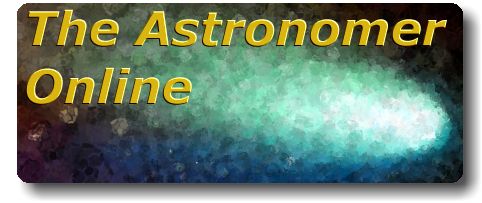Contents
- TA details
- Homepage
- Magazine index
- Our history
- Contact details
- Subscription
- Discovery procedure
- Meeting reports
- Youtube channel
- Members' services
- E-circular archive
- On-line charts
- Sales
- Chart catalogue
- Special publications
- Back issues
- Videos
- Advertising rates
- Observations
- Aurora/NLC
- Comets
- Deep sky
- Eclipses/Transits
- Gamma Ray Bursts
- Meteors
- Minor planets
- Planets
- Sun
- Supernovae
- TNOs
- Novae/Variables
- Links
- Vizie-R
- JPL Horizons
- IAU Central Bureau
- Minor Planet Center
- Heavens Above
- BAA
- Further links
|
|
Orbit diagrams
It is often difficult to visualize the path of a comet or asteroid
from its orbital elements. I have written a front end to the Povray
ray-tracing program which automatically converts a set of orbital
elements into a Povray scene definition file. This is then rendered
to give the images that you see below.
The orbit diagrams show the planes of the Earth's orbit (the ecliptic)
and the comet's orbit. It is easy to see how the comet moves relative to
the earth and how we get to see it in the night sky.
Comet C/1995 O1 (Hale-Bopp)
|
This comet was discovered in 1995 and it came to perihelion in
April 1997. When it was discovered it was well south of the ecliptic and
well beyond Jupiter's orbit. Just before the comet arrived at perihelion it
was well above the ecliptic and so was well seen from the northern
hemisphere.
|
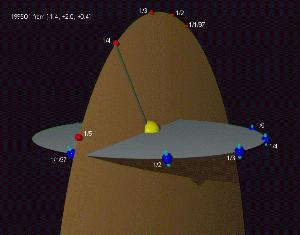
The orbit of C/1995 O1
|
Comet C/1996 B2 (Hyakutake)
|
This comet was discovered when it was well below the ecliptic. It made
a close approach to the earth in late 1996 March shortly after its
northbound ecliptic crossing at the ascending node. It then went on
to perihelion in early May and crossed the ecliptic going south shortly
afterwards.
|
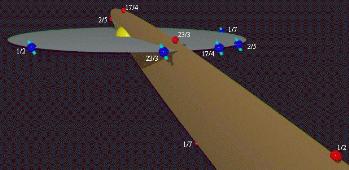
The orbit of C/1996 B2
|
Comet C/1996 Q1 (Tabur)
|
This comet was discovered by Vello Tabur on 1996 August 19 when it
was well below the ecliptic. It is in a highly inclined orbit and
it crossed the ecliptic moving north in the last week of 1996
September. It reached perihelion on 1996 November 3 when it was well
above the ecliptic.
|
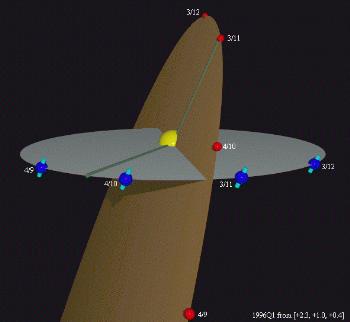
The orbit of C/1996 Q1
|
Comet Tempel-Tuttle
|
This comet is responsible for the Leonid meteor shower and it is easy
to see why from this diagram. The descending node of the comet's orbit
passes very close to the earth's orbit at the point where the earth is
around November 16 each year. The debris left in the wake of the comet is the
cause of the Leonid meteors we see every year near to that date. The
period of the comet is roughly 33 years and it is on its way back to
the Sun. Enhanced Leonid activity should be expected for the next
few years.
|
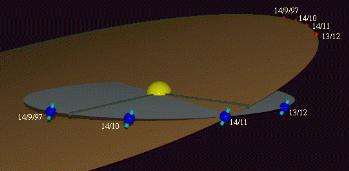
The orbit of Tempel-Tuttle
|
|

